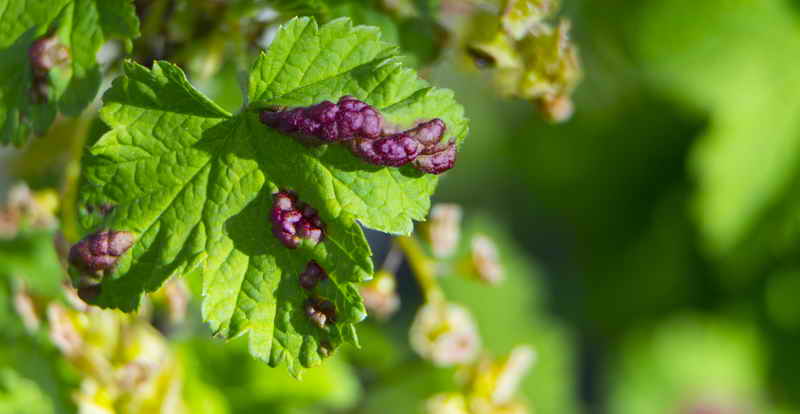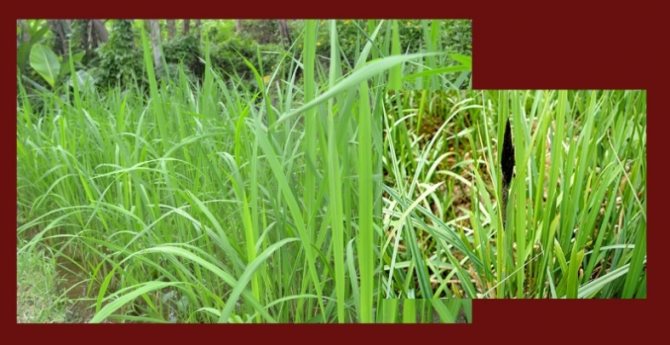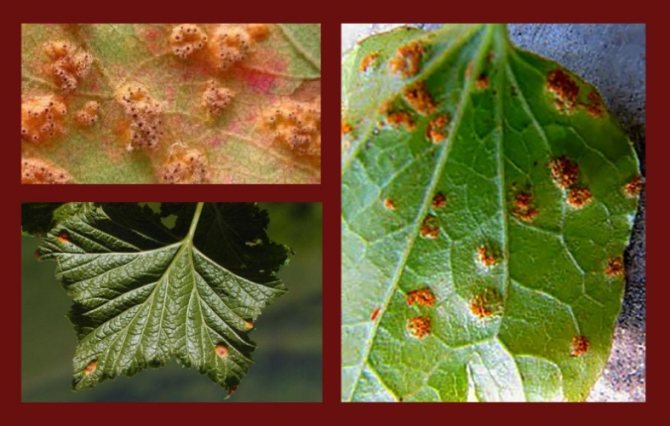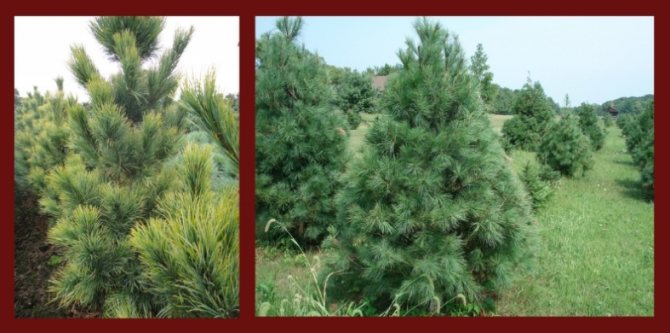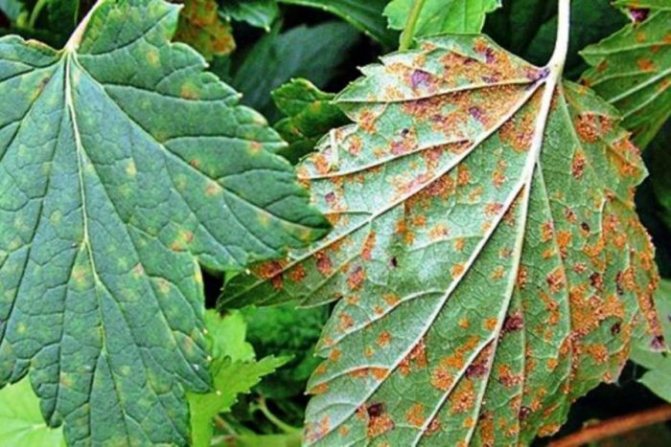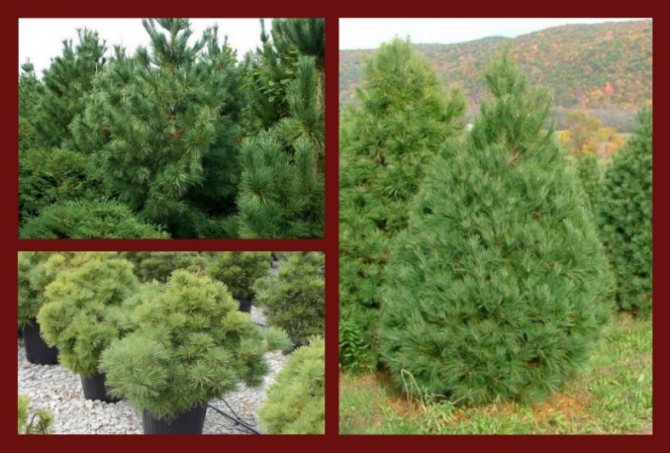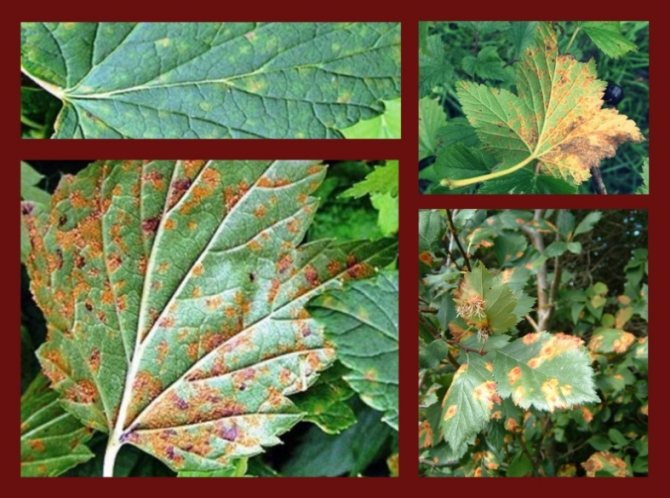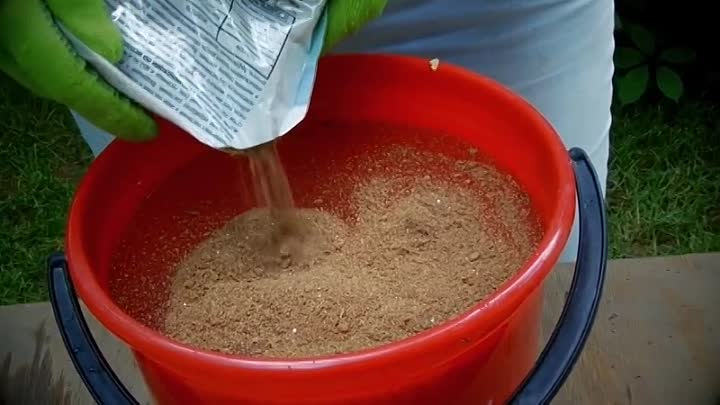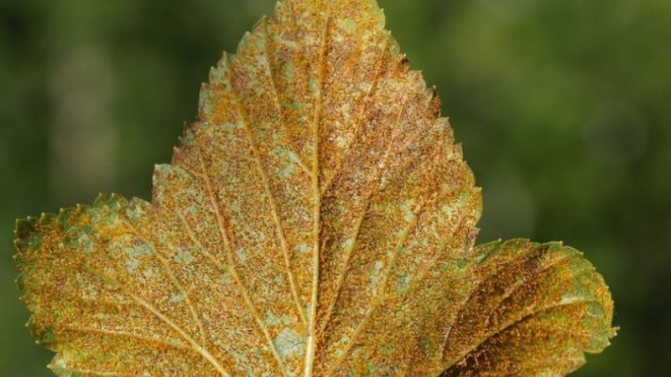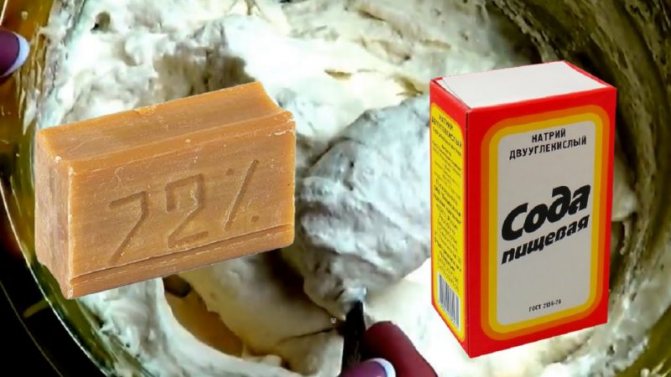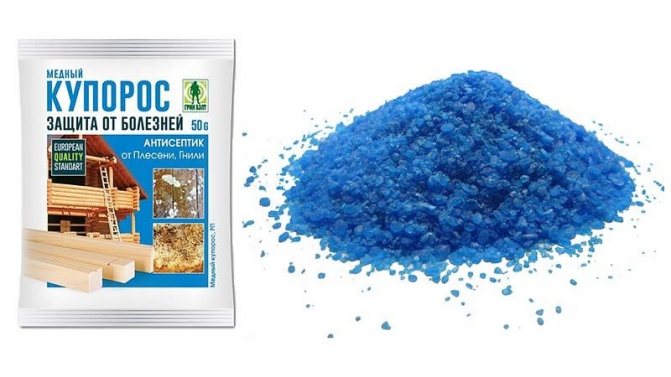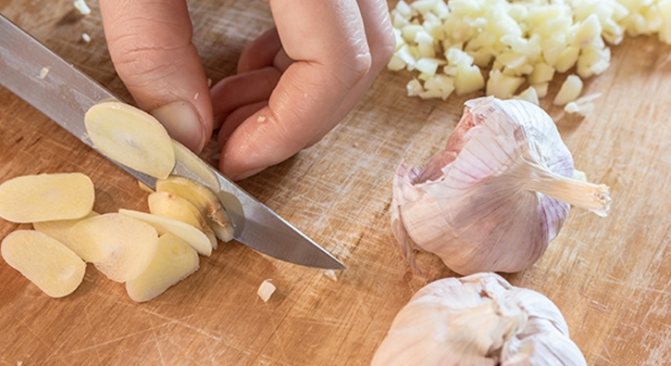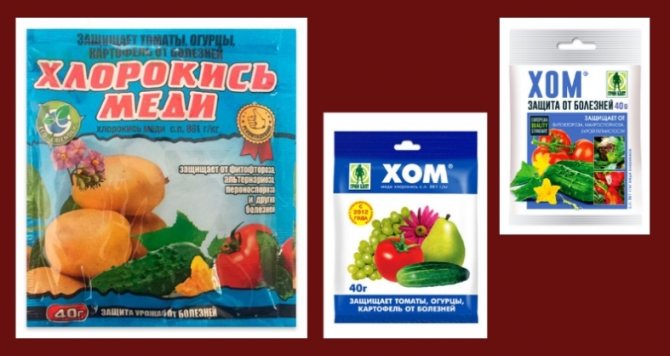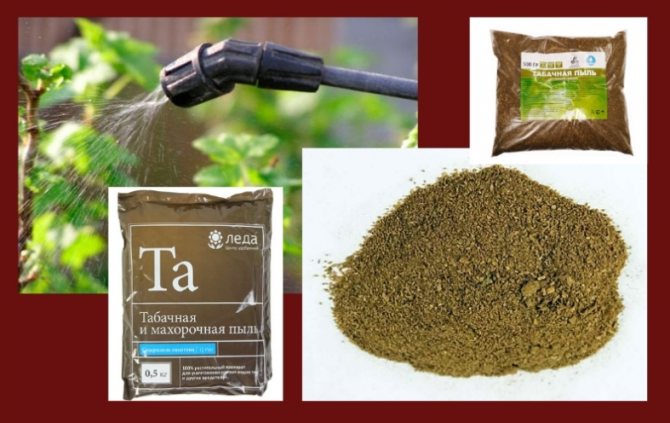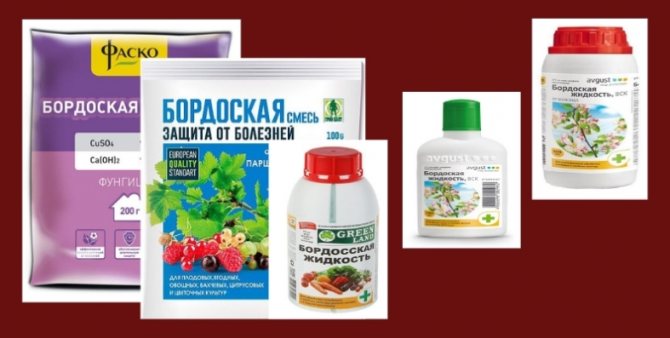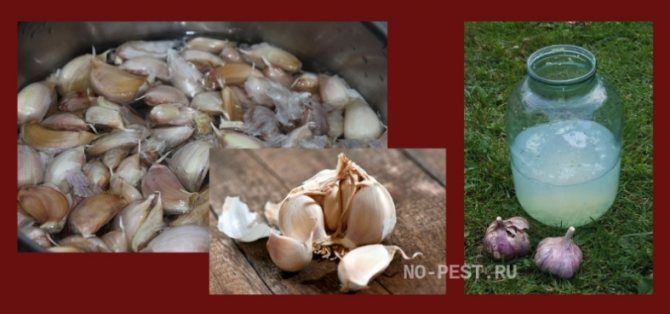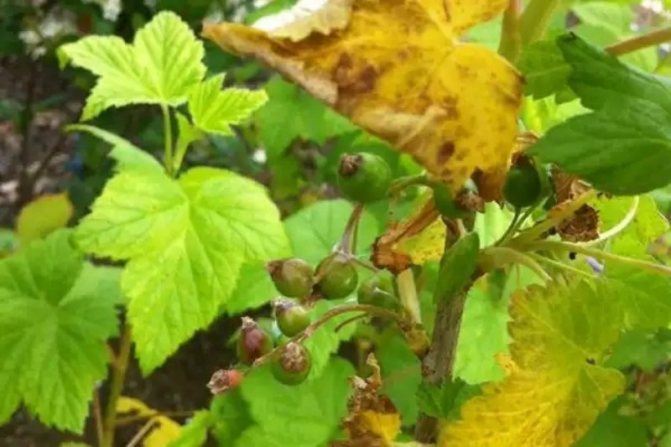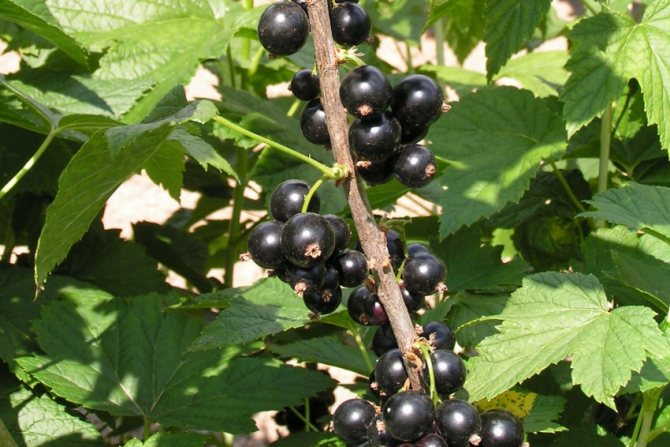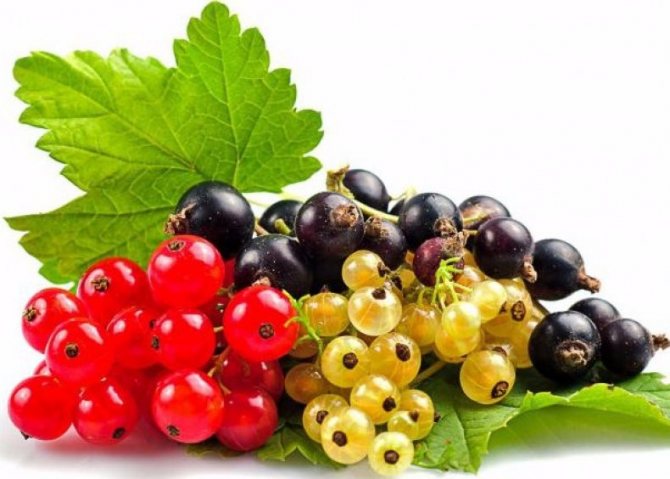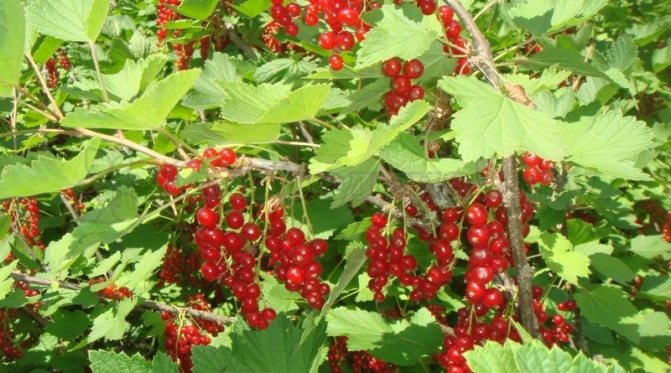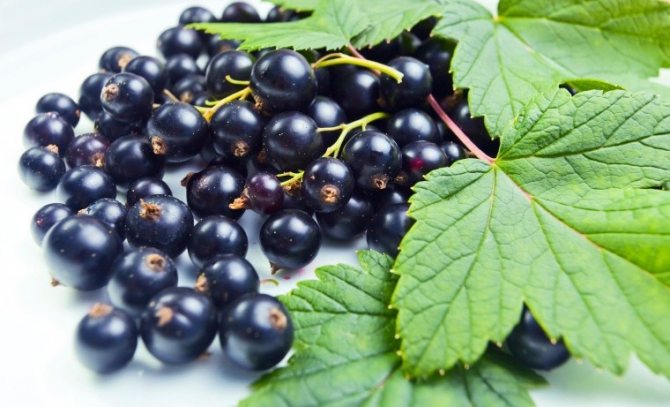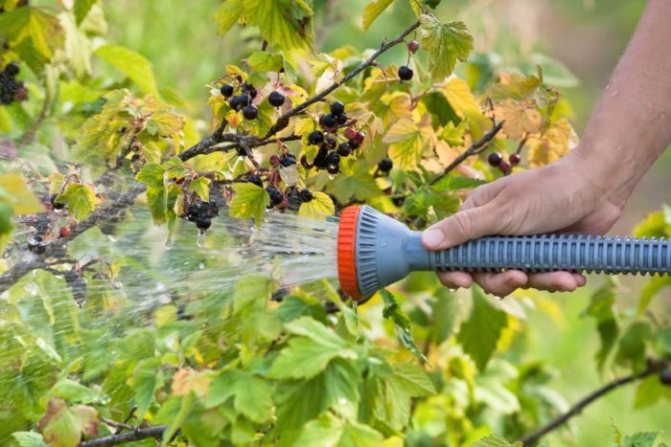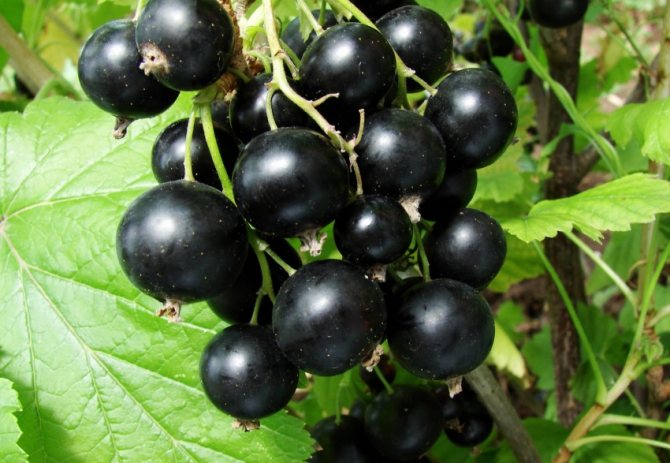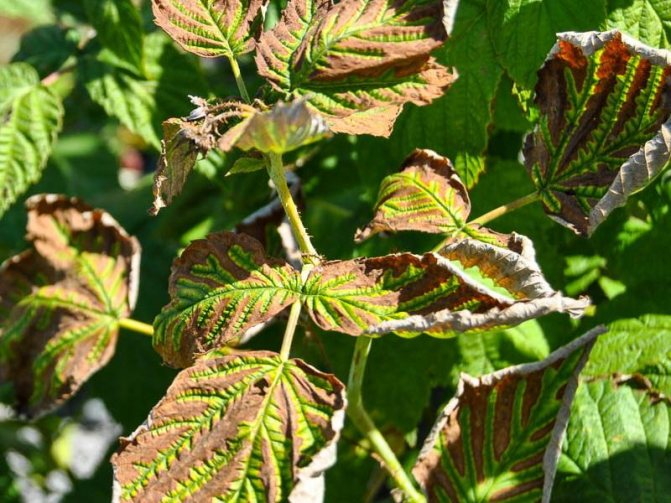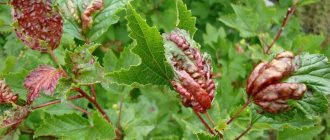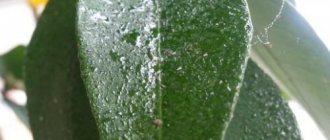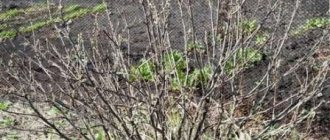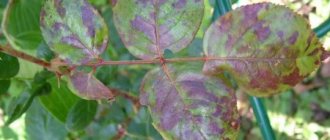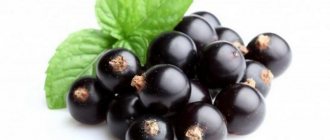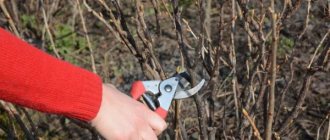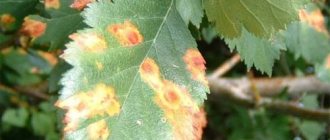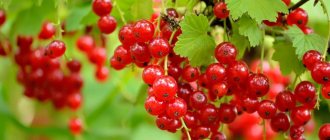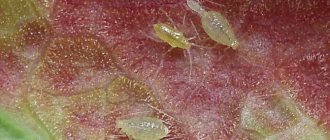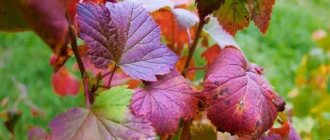Currant is one of the most unpretentious and hardy garden plants. Black, red and white varieties of this culture can grow in all regions of our country. She is not demanding to care for and is capable of producing crops even with minimal attention of the gardener. However, without protection from diseases and pests, the shrub often dies.
The most common and dangerous disease of currants is rust. It often infects crops and causes leaves, shoots and berries to fall off. Without timely treatment, the bush dies. How to deal with rust on currants and prevent its appearance, we will tell further.
Pest characteristics
Especially often, the disease occurs if the bush grows near sedges or from conifers. It is important to be able to recognize the disease in a timely manner in order to begin the fight against pathology before it causes significant harm to the currants.
When to wait for the first manifestations
Goblet rust may be asymptomatic in the early stages of the lesion. The gardener harvests, prepares the bush for the winter, but does not detect the first signs of the disease. This is not scary, since pathology in this case will not cause severe damage to the currants. Learn about white bloom on currant leaves at this link.
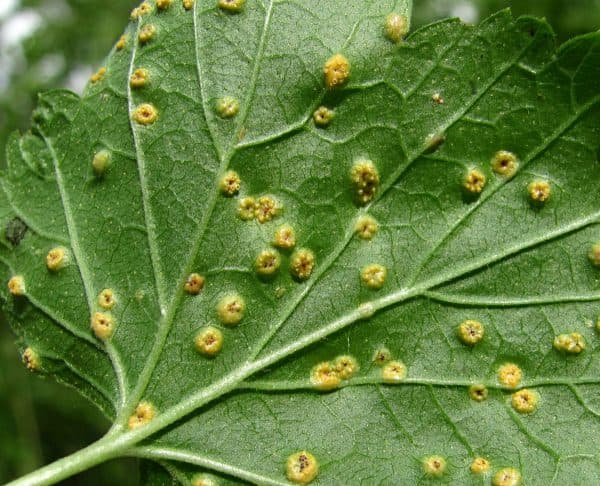
Yellow pads on the leaves are the first sign of the disease.
However, in early spring, the disease begins to develop actively. The first signs of the pest can be found in early summer. From this point on, you should begin to fight the fungus.
Symptoms and signs of damage
On the part of the plant where goblet rust occurs, spots of orange or yellow hue appear. Defects on the leaves are especially noticeable - from above you can see spots of a saturated shade. There are black dots on the defects. The disease also affects the lower part of the leaf. Here, the pathology is manifested by yellow pads. After a while, they take the form of glasses. Hence the name of the parasite.
Effects
Glassy rust affects not only those parts of the plants on which the fungus progresses, but also the entire bush. As the disease progresses, the leaves are deformed. If the disease affects the branches of the bush, then the leaves die off and fall off.
Goblet rust spreads to the fruit. As a result, the berries acquire an irregular shape. In addition, fetal development stops.
This means that the lack of timely measures aimed at getting rid of the parzite leads to a lack of currant yield, loss of frost resistance by the plant and the death of the bush. The use of special drugs that destroy the pathogen will help to avoid such consequences. This article will tell you about a kidney mite on currants.
Diagnostics
Determining that your plantings are affected by this ailment is not difficult. If you see formations on the leaves, called pustules or pads, then this is nothing more than currant goblet rust. How to deal with this ailment? First of all, you need to prevent the spread of the disease to neighboring bushes, but more on that later. So, brown pads on the leaves, if you do not take measures in time, crack.From them spores of the fungus pour out, which infect everything around. Yes, we have not yet said that the disease is caused by rust fungus.
Control methods
You can deal with goblet rust in various ways. This allows gardeners to choose the most suitable option.
Drug treatment
There are several chemicals that help get rid of goblet rust in a short time. Before using any product, it is necessary to prepare the plant for processing. To do this, it is recommended to perform the following procedures:
- cut off the affected parts of the currant from the bush;
- burn diseased leaves, branches to stop the spread of the fungus, if this is not done, then the affected parts of the bush will settle in the ground, which will lead to a repeated disease of the plant;
- drain the soil to remove excess moisture.
Only after the preparation of the plant can the currant be treated with chemical preparations against goblet rust.
Previkur
It is a systemic fungicide with a broad spectrum of action. The product is used to combat goblet rust on currants and root rot. Previkur has protective properties, stimulates plant growth, and has a positive effect on the state of immunity.
To prepare a medicinal solution, you will need the following ingredients:
- Previkur - 15 ml.
- Water - 10 liters.
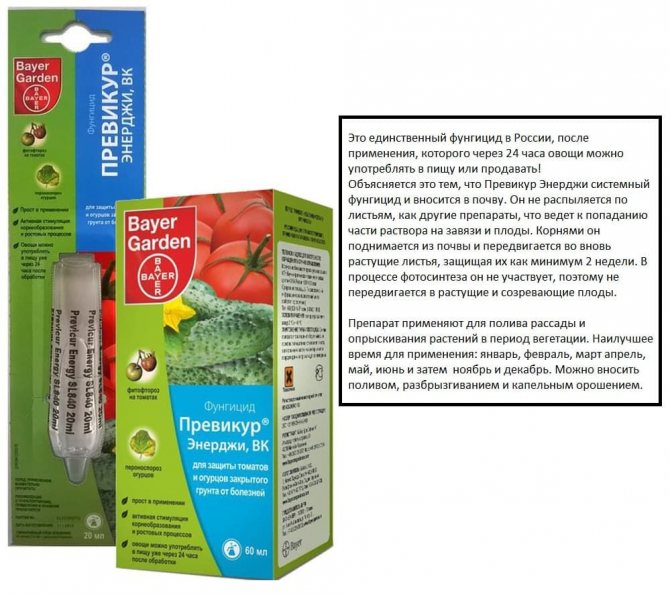

Dissolve the drug in water. First take Previcur, add some water, stir well. Gradually pour in all the liquid. Use the resulting solution to spray the bush.
Speed
It is a contact, systemic fungicide intended for the prevention and treatment of various diseases of garden and indoor plants. A distinctive feature of the product - it can be used at any stage of growth, flowering, fruiting of currants. The main active ingredient of Scor is difenoconazole, which belongs to the chemical class of triazoles. The product is recommended for use at an early stage of pathology development.
The drug is not used in its pure form. It is bred in water. It is recommended to prepare the solution immediately before use. To prepare the product, dilute 2 ml of the product in 5 liters of water. Process the currants with the resulting composition.
Fitosporin
This is a new generation microbiological preparation. Recommended for use for the treatment of any types of fungal, bacterial plant pathologies. Product release forms:
- powder;
- liquid;
- paste.
The main advantage of Fitosporin is the possibility of using it at any stage of flowering and fruiting of currants. As the manufacturer assures, the product will not harm either the berries or human health, even if the product is used on the day of harvest.
To prepare a solution for goblet rust, dissolve 5 g of the product in 10 liters of water. Spray the currants with the resulting product.
Lack of the drug - the main active ingredient dies under the influence of ultraviolet radiation. For this reason, it is recommended to use Fitosporin only in cloudy weather in the evening.
Topaz
It is a fungicide that prevents the appearance, helps to destroy the fungus on plants, including goblet rust. Topaz is an effective and safe remedy recommended for combating the disease. The main active element of the product is penconazole. The substance stops the growth of the fungus by stopping the germination of its spores.
One of the advantages of the product is its fast absorption. This allows Topaz to be used even in rainy weather. The effectiveness of the product does not depend on temperatures. Even in hot weather, the procedure will give a positive result.
To get rid of glassy rust, dissolve 4 ml of Topaz in 10 liters of water. Process the plant with the resulting product.
Bordeaux liquid
This is one of the most effective remedies in the fight against goblet rust on currants. To prepare the solution you will need:
- copper sulfate - 100 g;
- calcium hydroxide - 100 g;
- water - 10 liters.
Dissolve both drugs in the indicated amount of water. Use the resulting solution to spray the bush. The procedure is recommended to be performed three times during bud break. The interval between treatments should be at least three weeks.
Copper sulfate
This product can be used to combat fungal plant pathologies and as a top dressing. The tool promotes the destruction of pests (glass, aphids, scale insects), the growth of currants, and the rapid ripening of fruits. Read about folk remedies for aphids on currants here.
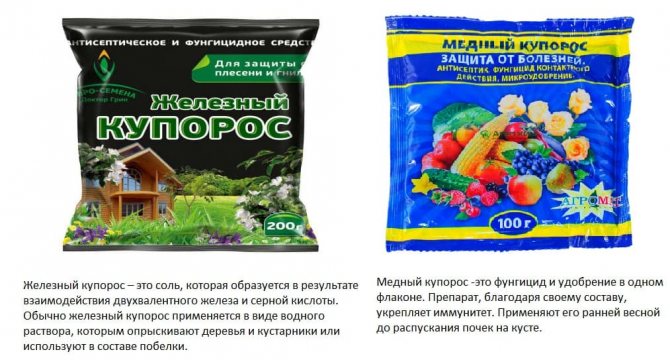

A solution made from copper sulfate is recommended for use before budding on currants. If the product is used later, the plant will receive a chemical burn. This will lead to the death of the currant. The drug can be used after foliage has fallen.
To prepare the solution, you will need the following components:
- copper sulfate - 100 gr;
- water - 10 liters.
The product must be prepared like this - put copper sulfate in a container, add a liter of hot water. Stir the product thoroughly. Add 9 liters of hot water. Stir the solution again, filter the product. Cool the preparation, use for spraying currants.
Cuproxat
It is a fungicide designed to combat fungal plant pathologies, including goblet currant rust. One of the main active components of Cuproxat is copper. The product is moisture resistant, so it can be used even in rainy weather.
The drug destroys the pest through direct contact. The substance penetrates into the cells of the parasite causing the disease, as a result of which the pathogen dies.
To prepare the product, shake the container with Cuproxat thoroughly. After that, measure out 50 ml of the drug, dissolve it in 10 liters of water. After that, treat the bushes with the resulting product.
Folk remedies
Folk remedies have proven to be effective in combating the disease. Such drugs do not give instant results, but there are no harmful chemical compounds in their composition.
Soda solution
To prepare such a product, take:
- soda - 2 large spoons;
- liquid soap - 3 large spoons;
- hot water - 5 liters.
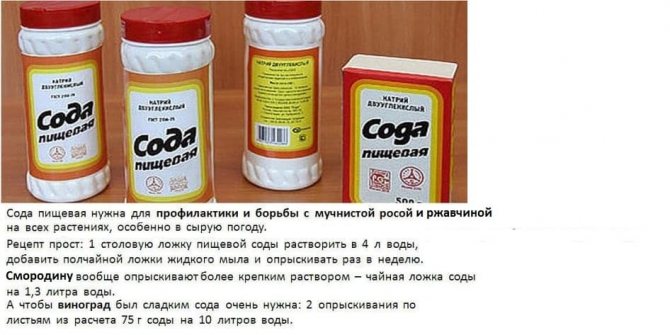

Dissolve soda, liquid soap in water. Pour the resulting product onto the plant. The procedure is recommended to be repeated several times. Read about processing currants with soda.
Manure
Another product that helps to get rid of the disease is mullein. A solution should be made from the manure to spray the plant. To prepare the product, you will need the following components:
- manure - 1/3 of a ten-liter bucket;
- water is the remaining volume.
Place the manure in the bucket. Add water to the top. Place the mixture in a place where there is no access to sunlight. Insist the solution for three days. Stir the drug throughout this time. After that, filter the product, dilute with water in a ratio of 1:10. Process the currants with the resulting mixture. Read about horse manure as fertilizer here.
Dairy products
To get rid of the fungus, you can use any natural fermented milk product. It can be kefir, yogurt, whey or simple sour milk. A goblet rust mixture is prepared from the following components:
- fermented milk product - 1 part;
- warm water - 10 parts.
Combine both products, mix. Pour the resulting solution over the currants. The procedure is recommended to be performed in the evening in cloudy weather.
Tobacco dust
Tobacco is one of the most effective foods in the fight against goblet rust.The fact is that the fungus does not tolerate this agent.
To get rid of a pest with tobacco, you need to prepare a drug from the following components:
- tobacco dust - 200 gr;
- hot water - 2-3 liters.
Tobacco dust from pests and diseases must be placed in a container and water must be added. Leave the drug to infuse for three days. After that, filter the solution, use a bush treatment agent.
Garlic
Goblet rust also does not tolerate garlic. For this reason, gardeners often use this product for pest control. To prepare a garlic solution, you will need the following components:
- peeled cloves of garlic - 1 cup;
- hot water - 2-3 liters.
Combine both products, leave to infuse for three days. Then filter the solution, use it to spray the plant.
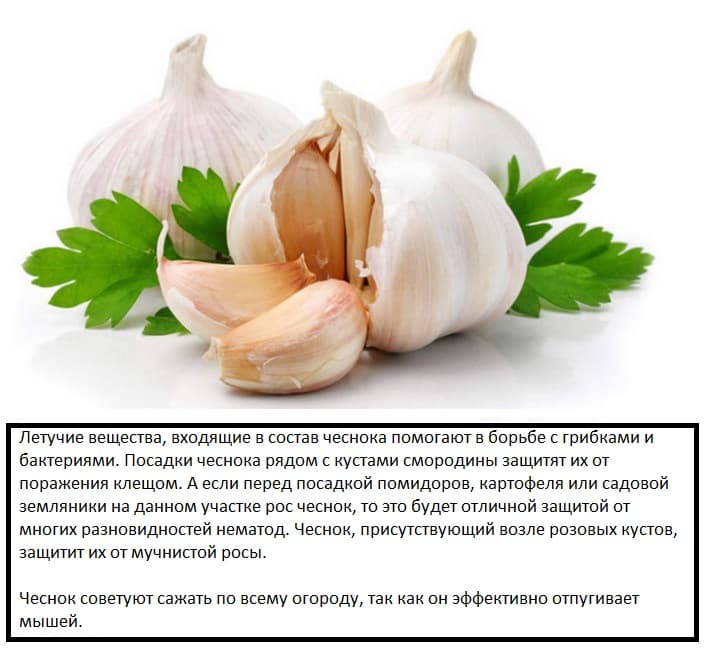

Prepare the remedies according to the recipes above. Filter both solutions, pour into a bucket with a volume of 10 liters. Place a large spoonful of liquid soap, a small spoonful of ground pepper in a container. You can use a red or black product. Leave the solution to infuse for another day. After this time, filter the drug. Use the product to treat the bush before the flowers begin to bloom. Read about ammonia from aphids and other pests in this material.
A good result can be achieved if you use a garlic and tobacco preparation at the same time.
Agrotechnical measures
So that the goblet rust does not bother the currants, agrotechnical measures can be used in the fight against the pest:
- get rid of sedges within a radius of 0.5 km from the site;
- do not excessively moisten the soil under the bush;
- choose for growing such varieties of currants that are immune to fungal diseases.
Duration of treatment
Unlike fungicides, home remedies work much more slowly. Therefore, a number of procedures may be required to completely get rid of the fungus. After spraying, you need to sprinkle the cake remaining after straining around the bush and slightly dig in. And after two weeks, make an infusion of onion peels and spray the bushes with it. This infusion will give the plants strength and relieve stress. Experienced gardeners say that these procedures had to be performed for about two years in order to overcome the ailment. The following years have shown that rust does not return. But prevention has to be done annually, not forgetting about weed removal and annual feeding.
Time to process shrubs
It is easier to prevent any disease than to fight it. This also applies to goblet rust. Currant processing is recommended before the onset of the disease.
Spraying a plant is performed in several stages:
- perform the first treatment before the flowering of the bush, when the leaves begin to bloom;
- do re-spraying after the flowers start blooming;
- carry out the third treatment after the flowering of the currant is complete.
If the disease has spread throughout the plant, it is recommended to perform the fourth treatment of the bush with the drug. This should be done 10 days after the third procedure.
Preventive measures
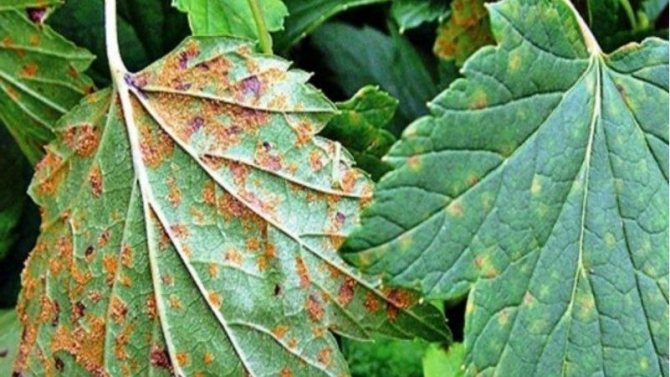

Treating rust and eliminating its consequences is much more difficult than preventing a disease. Basic rules of prevention:
- Fallen leaves and plant debris are removed in autumn. Dig up the soil.
- The weeds around the currants are removed.
- The area where currants grow should not be swampy or be located where groundwater is located close to the surface. It is not recommended to plant shrubs near coniferous forests.
- In the spring, before flowering, currants are poured over with boiling water. After that, they are sprayed with a solution of copper sulfate.
- After prolonged precipitation, preventive treatment is carried out. Use biologics or folk remedies.
Soil care
High humidity and an abundance of soil fertilizers are favorable conditions for the development of the fungus. For this reason, in order to prevent the occurrence of pathology, it is recommended to provide proper soil care:
- destroy sedge thickets and drain the soil;
- loosen the soil twice a year, but it is best to do the procedure more often;
- dig up the soil thoroughly in autumn and spring;
- avoid excessive irrigation of the land;
- use as much fertilizer as the plant requires, as abundant feeding creates a favorable environment for pests to emerge.
What is the danger to currant bushes?
Rust is a dangerous fungal disease. Affecting the currant bush, it contributes to its gradual death. If untreated, by the end of summer, the lower part of the leaves is covered with rust. The spots grow and change their shade to brown and red. The fungus covers the entire affected area.
The currant bush begins to change outwardly. The leaves become tough and terry. The berries are covered with an orange bloom. You can no longer eat them. Then the fruits dry out and crumble. The shrub, due to the disease, is greatly weakened. In this state, he goes to winter. As a result, in the spring the shoots remain frozen and cannot subsequently begin to ripen.
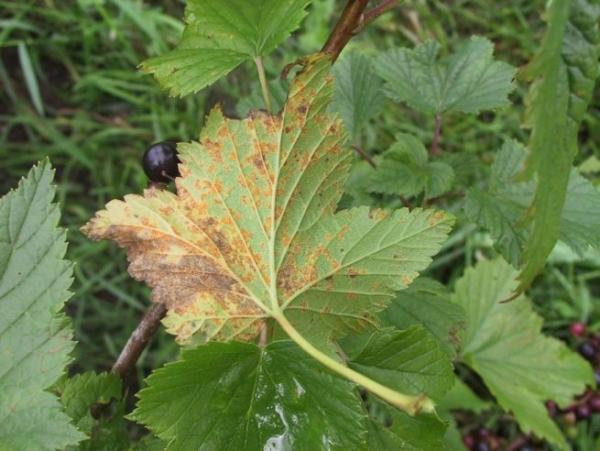

Currant varieties resistant to goblet rust
There are varieties of currants that have good immunity to various diseases, including goblet rust. These include the following varieties:
- Black veil.
- Katyusha.
- Belarusian sweet.
- Grace.
- Semiramis.
These are currant hybrids that are resistant to the occurrence of any pathologies. There are other plant varieties that are not afraid of the fungus. If, despite good immunity, goblet rust appears on the currants, then you can fight the disease by all the means that were given above. A hybrid of currants and gooseberries of Josht has good resistance to infection with diseases.


How to fight?
The fight against goblet rust, as well as with other diseases, consists of several stages:
- Strategic - long-term preventive measures: selection of resistant varieties, adherence to the planting step, planning the garden area.
- Preventive - annual care activities that prevent disease: weeding, pruning, spraying, mulching.
- Fighter. It is used when the infection has already occurred.
The exterminating stage consists in the collection and destruction of infected leaves, spraying with pesticides, and treatment with folk remedies.
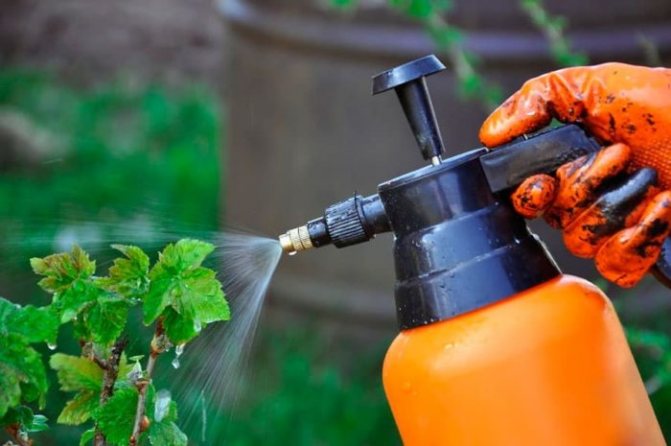

Prevention of the occurrence of fungal pathology
The following preventive measures help to avoid the appearance of glassy rust on currants:
- after the foliage has fallen, collect it and burn it;
- regularly remove weeds under bushes;
- loosen the ground under the currants at least twice a year;
- dig up the soil in spring and autumn;
- remove the shoots of the bush, over five years old, disinfect the cut site with a special solution;
- use potassium-phosphorus fertilizers regularly;
- before budding, subject the bush to heat treatment - for this, pour three liters of hot water onto the plant, this will help protect the currants not only from goblet rust, but also from other fungal diseases.
What is the danger of the disease
Rust not only makes the currant bush aesthetically unattractive, and the leaves unsuitable for use in conservation, but also threatens the life of the plant. The harm that this disease causes:
- Loss of crops. Few ovaries are formed on a diseased plant. Many of them fall off. Fungus-affected fruits, which have already formed, become unsuitable for consumption.
- Disruption of photosynthesis stops plant development.
- Falling up to 50% of leaves. Young shoots often fall off.
- Reduced cold resistance - the currant bush may not survive the winter.
- Decreased immunity. The currant becomes susceptible to other diseases.
Without treatment, the flexible remains on the plant for several years. As a result, the currant dies.
Reasons for the appearance
The spores of the fungus that cause the above diseases are very hardy and survive low temperatures well, therefore, after wintering safely in the foliage that has fallen under the currant bush, in early spring they find a new refuge on young juicy currant leaves.
Sources of all types of rust spores are nearby conifers, sedges, and marsh plants. Moisture is a favorable environment for the development of fungi. Currant bushes planted in lowlands or nearby swamps, reservoirs are often subject to rust. Prolonged rainy weather also often provokes the appearance of fungus.
Also find out why currant branches dry up.
Rules for conducting therapeutic measures
Currently, about 70 different diseases of the currant have been recorded. Despite their large number, the rules for conducting therapeutic measures of this culture remain practically unchanged for all types of diseases.
Did you know? Black currant
—
a summer delicacy that is familiar to us, but for the inhabitants of many European countries this berry is a delicacy. So, for example, in Holland it can be bought very expensively in eco-markets, and in small quantities.
They boil down to a specific algorithm of actions described below:
- Primarily, it is extremely important to carry out preventive tillage of the soil and bushes with the onset of above-zero temperatures in spring. It is difficult to predict how the future growing season for the plant will develop, but feeding and preventive measures to combat fungal diseases and harmful insects will not interfere. If the last year for the plant was successful, without signs of any diseases, then you should not use harsh chemicals or fungicides. You can do with natural remedies and folk methods. If in the previous growing season the plant was sick, then chemical treatment is necessary, and it must be carried out before the buds swell.
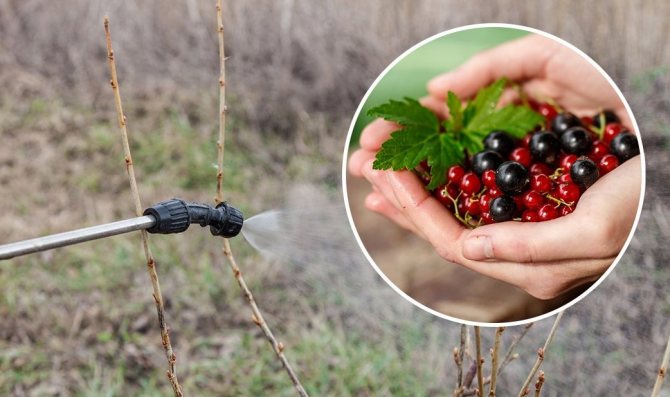

- Having chosen a preparation for treating a bush, the dosage should be strictly observed and repeated treatments should not be skipped, because more often than not a single spraying does not give the desired results.
- When choosing organic agents to combat fungal diseases of currants, you need to monitor their effectiveness. If you do not see an improvement in the condition of the diseased plant, then it is necessary to add low-hazard insecticides so as not to lose the plant.
- Loosening and weeding should be done regularly under and around the bush. This must be done in order to ensure good ventilation of the culture and to prevent stagnation of moist air, which contributes to the spread of the fungus.
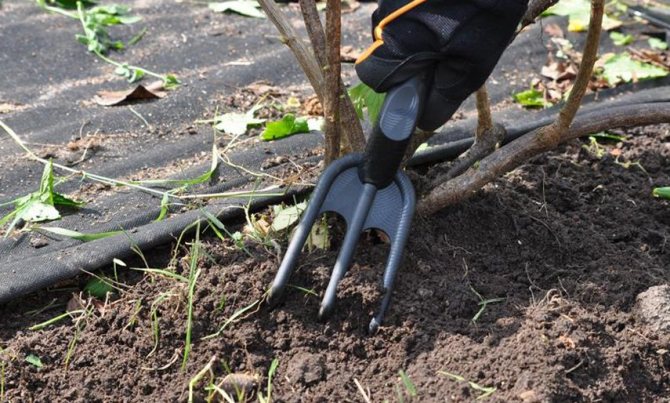

- It is advisable to timely prune not only dry branches, but also excess growth, leaving 4–5 young healthy shoots of renewal.
- The development of fungus and wintering of pests should be prevented. This means that you need to remove all sorts of places of their settlement (dry foliage under the bushes and on them, rotten roots, the remains of branches and other organic matter in the soil surrounding the bush).
- Make podzimnyu top dressing the bush with the necessary fertilizers that will dissolve and nourish the bush in the autumn-winter period.

